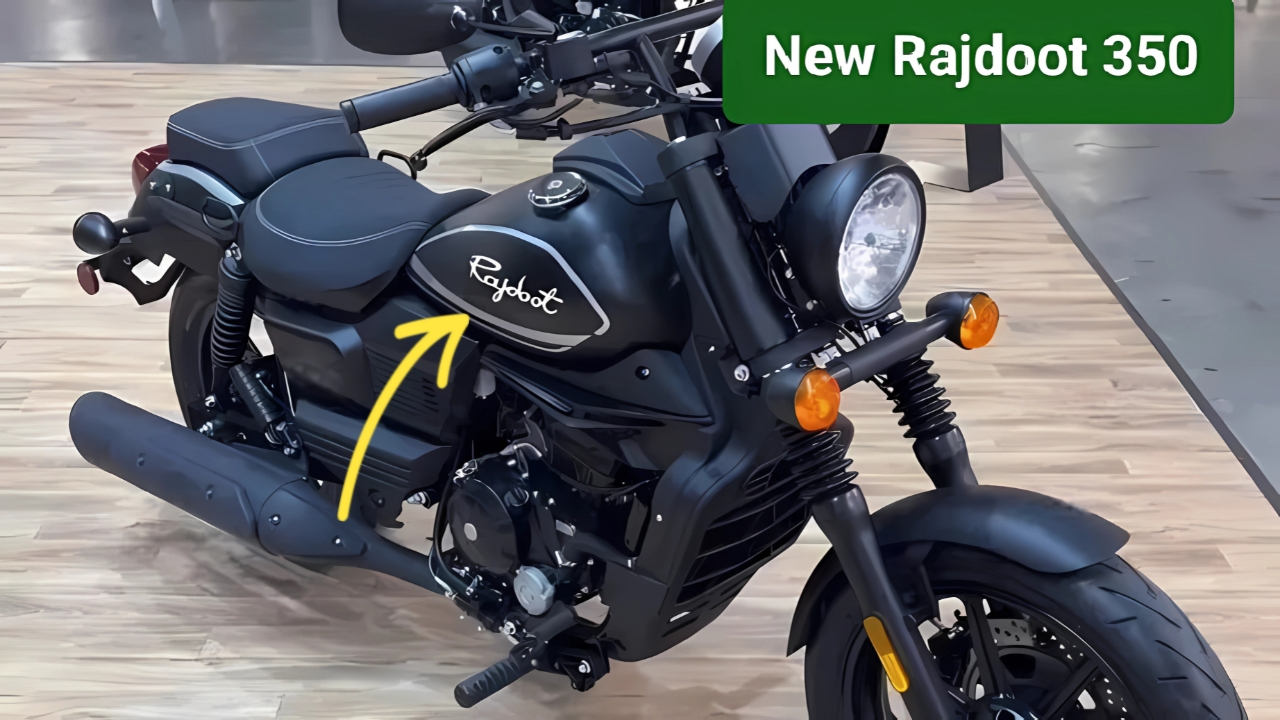Rajdoot 350: In the rich tapestry of India’s automotive history, few motorcycles have captured the imagination and loyalty of riders quite like the iconic Rajdoot 350.
Manufactured by Escorts Group under license from Czechoslovakian motorcycle manufacturer Jawa, the Rajdoot 350 (often affectionately called the “Rajdoot” by enthusiasts) became a cultural phenomenon that transcended its role as a mere mode of transportation to become a symbol of aspiration, reliability, and rugged Indian ingenuity during a formative period in the nation’s industrial development.
Rajdoot 350: Origins and Historical Context
The story of Rajdoot begins in the 1960s, a period when India was actively pursuing industrial self-reliance while selectively partnering with international firms to acquire technical expertise.
Escorts Group, already established in the agricultural machinery sector, recognized the growing demand for personal mobility solutions in a rapidly developing nation.
In 1961, they entered into a technical collaboration with Jawa, then part of Czechoslovakia’s state-owned industrial complex, to manufacture motorcycles for the Indian market.
The resulting product, initially marketed as the Jawa 250 Type 353/04, was later rebranded as the Rajdoot 350—the numerical designation referring not to engine displacement (which remained at 250cc) but to the model series.
This strategic rebranding reflected a broader nationalistic sentiment and helped establish a distinct identity for the motorcycle in the Indian market, where it would compete primarily with Royal Enfield, another transplanted European design that had found a second home in India.
Design and Engineering: Simplicity as a Virtue
The Rajdoot 350 featured a distinctive design characterized by its robust construction and functional simplicity.
The heart of the motorcycle was its 250cc two-stroke, single-cylinder engine producing approximately 12 horsepower—modest by modern standards but quite respectable for its era.
The engine featured a characteristic exhaust note that became instantly recognizable on Indian streets, with its distinctive “dhak-dhak” sound earning it the endearing nickname “Dhak-Dhak Bike” among enthusiasts.
The motorcycle’s design prioritized reliability and ease of maintenance—crucial considerations in a market where service infrastructure was still developing and owners often needed to perform basic maintenance themselves.
The pressed steel frame offered superior durability compared to tubular frames, while the leading-link front suspension provided stable handling on varied road surfaces.
The comfortable, deeply padded dual seat and upright riding position were well-suited for Indian road conditions and typical usage patterns that often included carrying a pillion passenger.
Aesthetically, the Rajdoot 350 featured clean lines with minimal ornamentation, embodying a functional elegance that aged gracefully.
The teardrop fuel tank, rounded headlamp cowl, and substantial fenders created a silhouette that remained largely unchanged throughout its production run—a testament to the soundness of the original design.
Available primarily in red, black, and maroon, the Rajdoot’s color palette reflected a conservative approach that emphasized longevity over fashion.
Cultural Impact and Societal Role
Beyond its technical specifications, the Rajdoot 350 occupied a unique position in India’s socioeconomic landscape.
Priced between the more affordable Bajaj scooters and the premium Royal Enfield motorcycles, the Rajdoot represented an aspirational yet attainable purchase for India’s expanding middle class.
For many families, acquiring a Rajdoot signified upward mobility and offered practical benefits that improved quality of life, from reduced commute times to expanded employment opportunities.
The motorcycle proved particularly popular among government employees, police departments, and postal services, where its reliability and low maintenance requirements made it an ideal choice for official duties.
This association with authority figures further enhanced its reputation as a trustworthy, no-nonsense vehicle that could withstand the rigors of daily use in challenging conditions.
The Rajdoot also featured prominently in Indian popular culture, appearing in numerous Bollywood films and television programs throughout the 1970s and 1980s.
Perhaps its most famous cinematic appearance came in the 1975 blockbuster “Sholay,” where the motorcycle and sidecar combination used by the characters Veeru and Jai became an iconic image that further cemented the Rajdoot’s place in the national consciousness.
Technical Evolution and Variants
Throughout its production run, the Rajdoot 350 underwent relatively minor technical updates, reflecting both the soundness of the original design and the conservative approach to product development typical of that era in India’s protected market. Notable variants included:
The Rajdoot GTS (Grand Turismo Sport), introduced in the late 1970s, featured a distinctive appearance with a smaller 175cc engine.
Its unconventional design, including a unique “minibike” profile, earned it the nickname “Bobby” after its prominent appearance in the 1973 Bollywood film of the same name.
The Rajdoot RD 350, produced under license from Yamaha beginning in 1983, represented a significant departure from the original Rajdoot design.
This high-performance model featured a 350cc two-stroke, twin-cylinder engine that delivered exhilarating performance but proved too expensive and fuel-intensive for mainstream success in the efficiency-conscious Indian market.
The Rajdoot Ranger, a motorcycle-scooter hybrid introduced in the 1980s, attempted to combine the step-through convenience of a scooter with the stability and performance of a motorcycle.
While innovative in concept, it failed to capture significant market share as consumer preferences began shifting toward more specialized two-wheeler categories.
Legacy and Collector Status
Production of the original Rajdoot 350 continued until the early 1990s, when changing emission regulations and evolving consumer preferences made the two-stroke engine increasingly unviable.
By this time, the Indian motorcycle market was opening to international competition and domestic manufacturers were introducing new designs with four-stroke engines and modern features.
Today, the Rajdoot 350 has achieved cult status among vintage motorcycle enthusiasts in India. Well-preserved examples command impressive prices at collector auctions, and various owners’ clubs throughout the country organize regular meets and restoration workshops dedicated to keeping these machines on the road.
The motorcycle’s simple engineering and robust construction have proven advantageous for long-term ownership, with many examples still functioning reliably decades after leaving the factory.
Rajdoot 350:
The Rajdoot 350 represents more than just a chapter in India’s automotive history—it embodies a particular moment in the nation’s industrial development when locally manufactured products began to establish their own identities while building on international technical partnerships.
For multiple generations of Indian riders, the Rajdoot provided reliable, affordable transportation during a period of rapid social and economic change.
While contemporary motorcycles may offer superior performance, efficiency, and features, few can match the Rajdoot’s significance as a cultural touchstone that helped motorize a nation.
Its legacy lives on not only in preserved examples and enthusiast communities but in the collective memory of a country where the distinctive “dhak-dhak” exhaust note once provided the soundtrack to daily life across cities, towns, and villages throughout the subcontinent.
In an era of increasingly homogenized global products, the Rajdoot 350 stands as a reminder of how transportation technologies adapt to local conditions and requirements, ultimately transcending their utilitarian origins to become beloved cultural artifacts that define an era.

